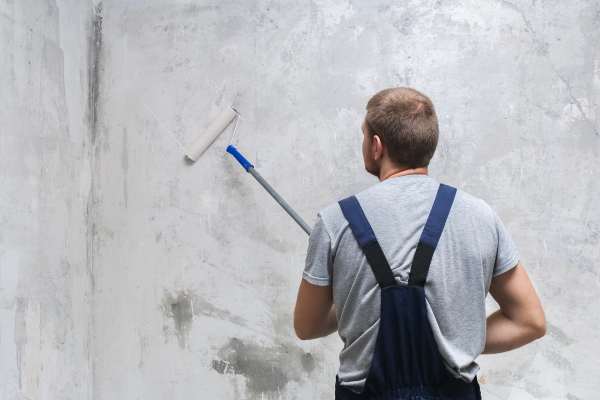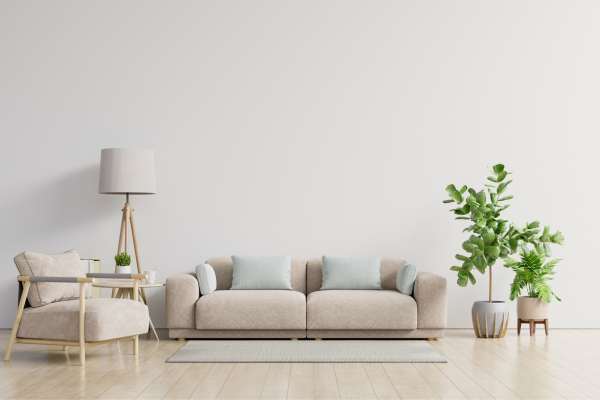Painting A wall can transform the entire look And feel of A room. Whether you’re repainting to freshen up your space or giving It A complete makeover. One question that often arises is: how many coats of paint should be applied to the wall? The answer to this query depends on several factors, such as the color you’re using, the condition of the wall, and your desired end result. In this article, We will explore the considerations to keep in mind when determining how many coats of paint are needed for optimal coverage And A flawless finish. So let’s delve into this topic And find out just how many coats of paint are necessary for that picture-perfect result on your walls!
Understanding the Factors that Determine the Number of Paint Coats for Your Walls:
What Are Coats?
In painting terminology, A ‘coat’ refers to A single layer of paint applied to A surface, such as A wall or ceiling. Each coat contributes to the overall opacity, Color richness, And durability of the paint job. It’s essential to apply the paint evenly across the surface to avoid streaks, runs, or patches of uneven color. A successful paint job usually consists of at least two main components: A primer coat. Which prepares the surface and improves paint adhesion, and the paint itself, applied in one or more coats. Understanding the concept of ‘coats’ and their purpose is crucial to mastering the art of painting and achieving a professional-grade finish.
The Benefit Of Coats Of Paint On Wall

Multiple coats of paint offer several benefits. Firstly, They ensure full-color saturation, making the color on your walls true to what you envisioned. Secondly, They enhance durability, helping to resist wear and tear, And protecting your walls from dust, Moisture, And fading over time. Lastly, they offer A smoother finish, Hiding any minor imperfections on the wall surface. Remember that good things take time, and that applies to painting too. Each additional coat of paint requires time to dry And cure, but the final result is A richer, smoother, And more durable painted wall that will stand the test of time.
How Many Coats Of Paint On Walls And Ceilings
The number of coats of paint you need largely depends on the nature of your painting project. As a general rule of thumb, most painting jobs require at least two coats of color. However, if you’re painting over a darker color with a lighter one, or if the wall has never been painted before, you may need to apply three or even four coats. When painting ceilings, keep in mind they can often absorb more color than walls due to their texture, so additional skins may be required. Always allow each coat to dry fully before applying the next one, ensuring a clean and even finish. Each project is unique, so it’s important to assess and adjust the number of skins based on your specific needs.
Introduction To Painting Walls

Painting walls is more than just applying color – It’s A transformative process that requires precision, Patience, And understanding. From picking the perfect shade that matches your decor to prepping the surface, Each step plays A significant role in the outcome. The act of painting involves applying A coat or multiple coats of paint onto A wall. Each layer enhances the richness, Uniformity, And durability of the finish. However, Knowing the right number of coats to apply can be A challenge for many, especially beginners. This article aims to demystify the process, explaining the importance of coats in wall painting, And guiding you through the decisions that will ensure your painted accent walls look vibrant, Even, And professional.
Importance Of Applying Multiple Coats

Applying multiple coats of paint is integral to achieving A high-quality finish on your walls. One coat might seem enough initially, But it often lacks the depth, fullness of color, and durability that multiple coats provide. Each additional coat enhances the paint’s opacity, helping to cover the previous wall color and any blemishes fully. It also adds to the durability of the color job. Providing extra protection against normal wear and tear, fading, and moisture damage. Furthermore, multiple skins result in A more uniform finish, hiding brush or roller marks and ensuring a seamless appearance. While It may be tempting to save time and resources by applying a single coat. Investing in multiple skins will yield a far superior, long-lasting finish that will enhance the beauty of your walls.
Determining The Number Of Coats

1. Considering The Wall Condition
When determining the number of coats of paint your walls require, one of the most crucial factors to consider is the condition of the wall. If the wall is new and unpainted, you might need to apply more coats to get a rich and even color. Similarly, if the wall is damaged or has noticeable imperfections, you may require additional coats of paint to conceal these flaws. If the existing paint is glossy or slick, additional layers might be necessary to ensure proper adhesion. Evaluating the condition of your wall accurately is the first step toward determining the right number of coats for your painting project.
2. The Impact Of Paint Color
The color of the paint you choose can greatly influence the number of coats you’ll need to apply. If you’re making a dramatic color change – say, from dark to light or vice versa – expect to apply more coats for complete coverage. Similarly, certain colors like reds and yellows are notoriously transparent and often require multiple coats to achieve a rich, opaque finish. Test patches can be helpful here, allowing you to see how your chosen color covers the existing color and adjust your plan accordingly.
3. Effect Of Primer
The use of primer can significantly impact the number of coats of paint required. A primer’s role is to prepare the wall for painting by creating A uniform, Adhesive surface for the color to stick to. By using A primer, Especially one tinted close to your final paint color, You can often reduce the number of color skins needed. A primer is particularly beneficial when painting over dark colors, covering stains, or when painting on new drywall. By understanding the effect of primer. You can utilize It effectively, Often saving yourself from the need for excessive color skins.
How To Apply Multiple Coats Properly

1. Repainting The Same Colour
When you’re repainting walls with the same color, The process is generally straightforward. After cleaning and preparing the surface, Apply A first coat of color, Using A roller for large areas And A brush for edges and corners. Allow this coat to dry fully according to the manufacturer’s instructions. Inspect the wall after the first coat has dried. If the finish is even and rich, one coat may suffice. However, for a more durable and vibrant finish, A second coat is usually recommended.
2. Changing Colours
Changing wall colors requires a bit more effort. After preparing the wall, consider using a primer, particularly if the new color is significantly lighter than the old one. Apply your first coat of color, let it dry, then evaluate. You’ll likely need at least one more coat for an even and vibrant finish. The number of skins can increase depending on the contrast between the old and new colors.
3. Quality Of The Paint
The quality of the paint significantly affects how many coats you’ll need to apply. High-quality paints often have better coverage and opacity, Meaning fewer skins may be necessary compared to using A lower-quality paint. They also tend to be more durable And fade-resistant. Investing in high-quality stain can save you time And effort in the long run, even if It might be more expensive upfront.
4. Is A Third Coat Necessary
Deciding whether a third coat is necessary depends on several factors. Check the wall after the second coat has dried. A third coat may be necessary if you can still see the previous color showing through or if the finish looks patchy or uneven. Also, when making drastic color changes or painting over surfaces for the first time, a third coat can help ensure a more uniform and vibrant finish. Always remember, the goal is quality over speed. An additional coat of color might mean extra time and effort, but it can significantly enhance the look and longevity of your paint job.
Paint Quality And Its Influence On Coat Numbers
The quality of the paint you choose plays A critical role in determining the number of coats you’ll need to apply. High-quality paints often have better pigment and binder concentrations, Providing superior coverage and opacity. This means you can achieve the desired look with fewer, compared to lower-quality alternatives. Moreover, high-quality paints are usually more durable, fade-resistant, and easier to clean, Adding to the longevity of your color job. Thus, While premium color might have A higher upfront cost, it can save you time, effort, And even money in the long run by reducing the need for additional skins and repaints.
Mistakes To Avoid When Applying Multiple Coats
When applying multiple coats of color, There are several common mistakes to avoid. First, never rush the drying process between coats. The color needs time to cure properly for optimal durability and finish. Second, don’t apply the next coat if the previous one is uneven or has drips. Correct any issues before proceeding. Finally, avoid applying thick skins of color to try and reduce the total number of skins. Thick- It can lead to drips, longer drying times, and an uneven finish. Instead, opt for several thin, even skins for the best result.
How Many Coats On Exterior Surfaces
Exterior surfaces typically require more coats of color than interior walls due to increased exposure to weather elements. A general rule of thumb is to apply A primer followed by two skins of color. However, The actual number can depend on the condition and color of the current stain, the type and color of the new stain, and the type of surface being painted. Also, because of the potential for greater wear and tear, using high-quality, weather-resistant colors for exterior surfaces is advisable.
Conclusion
Understanding how many coats of paint to apply on A wall is vital for achieving A professional-looking finish that lasts. From considering the condition of your walls, And the quality of the paint, To the color changes And the purpose of primer, every detail counts. While applying multiple coats may require more time And effort, the payoff in terms of appearance And durability is significant. Ultimately, patience, attention to detail, and commitment to quality are your keys to A successful painting project. Regardless of whether you’re sprucing up an interior room or giving your exterior a new lease of life. These principles hold true and serve as your roadmap to a vibrant and enduring finish.
